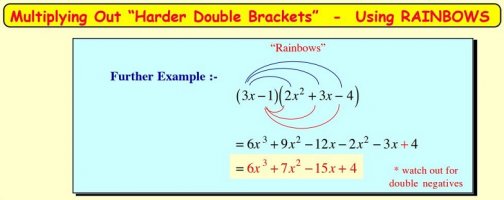Otis
Elite Member
- Joined
- Apr 22, 2015
- Messages
- 4,589
Except that we have a×b in the former and a×c in the latter.There is nothing different at all initially between multiplying out a(b+c) and (a+b)(c+d).
Perhaps, it would be better in your example to use a(b+c) and (a+d)(b+c).
[imath]\;[/imath]

